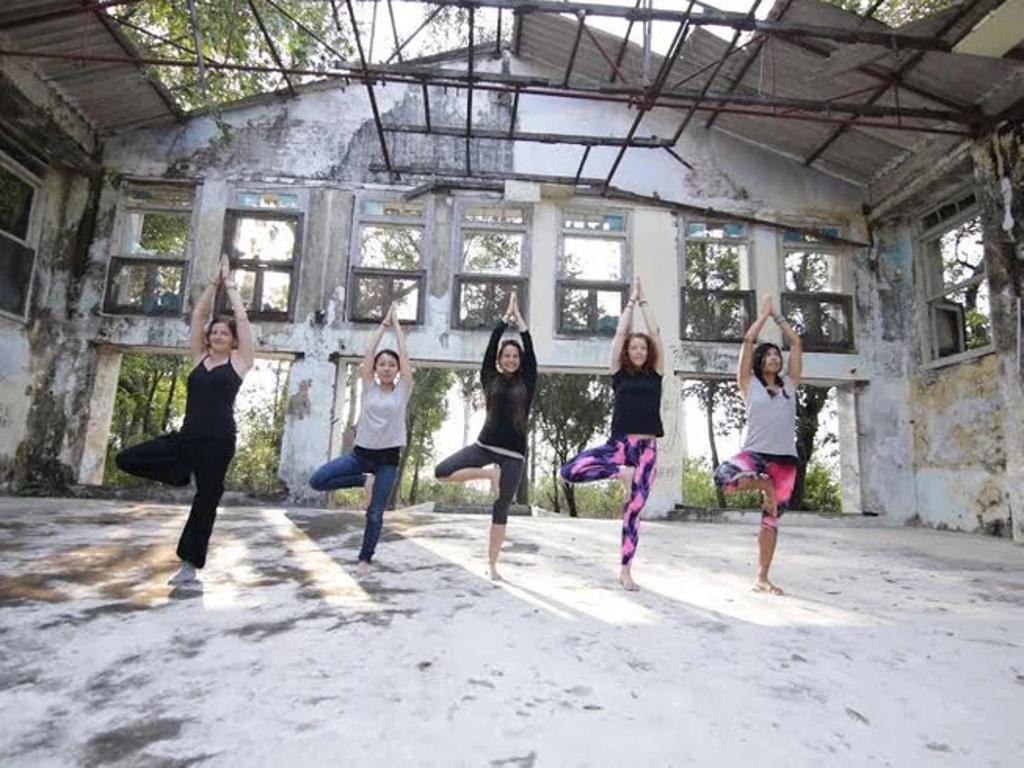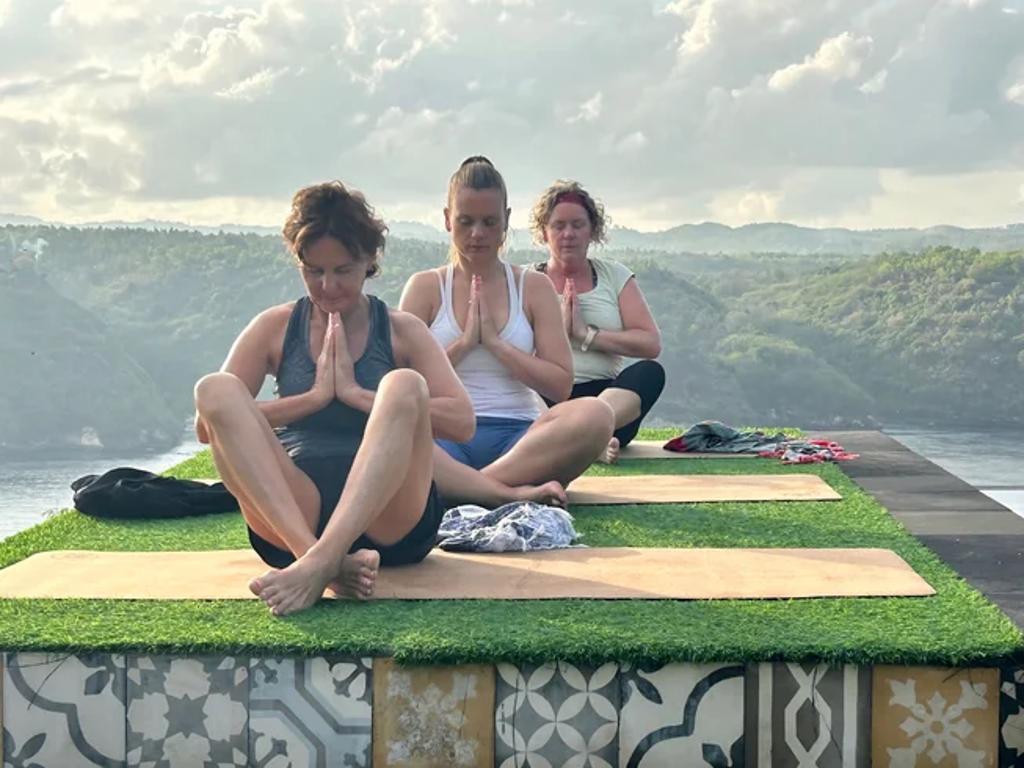The Best 200-Title: The Best 200-Hour Yoga Teacher Training Courses in Latin America: Strengths and Weaknesses
In recent years, the popularity of 200-hour yoga teacher training courses has soared, making it a daunting task to choose the perfect destination for aspiring yogis. While Latin America has long been a go-to region for travellers, its popularity as a Yoga Alliance certified teacher training destination is rapidly increasing among North American and European yogis.
Latin America offers an array of exceptional options for all your 200-hour yoga teacher training (YTT) needs. This diverse region, comprising 20 countries, caters to a variety of yoga enthusiasts across multiple yoga styles. We have curated some of the most sought-after destinations, assessing the strengths and weaknesses of each choice so our yogis can choose the option that best fits their style and budget.
1. Mexico:
Strengths: Mexico offers a diverse range of 200-hour yoga teacher training courses that blend traditional teachings with modern practices. The country is renowned for its rich culture and warm hospitality, providing an immersive yoga experience. The strengths of Mexico as a YTT destination encompass its safety record, cost-effectiveness, convenience, and reputation.
Safety: Mexico's safety situation varies by region. While tourist areas are generally safe, some places may have higher crime rates. It's essential to research your specific location thoroughly and take necessary precautions.
Cost: Mexico is known for its affordability. You can find YTT courses at a fraction of the cost compared to many other countries, making it accessible to a broader audience.
Convenience: Mexico is geographically convenient for travellers from North America and Europe. It's a short flight for many, and visa requirements are relatively straightforward.
Reputation: Mexico's reputation for YTT is steadily growing, with an increasing number of schools and instructors gaining recognition on the global stage.
Weaknesses: Language Barriers: If you're not proficient in Spanish, language barriers may pose a challenge, particularly in smaller towns or less touristy areas.
Crowds: Popular destinations can get crowded during peak tourist seasons, impacting the tranquillity of your YTT experience. Consider your retreat's timing or destination.
2. Costa Rica:
Strengths: Costa Rica is an enticing YTT destination known for its unparalleled natural beauty, eco-friendly practices, rich biodiversity, and ease of language for most travellers.
Safety: Costa Rica is considered one of the safest countries in Central America, making it an appealing option for solo travellers and women. Close ties with mainland USA have enticed a strong expat community that offers many conveniences, ranging from accommodation to banking and food choices.
Cost: While Costa Rica offers a fantastic YTT experience, it is generally more expensive compared to some other Latin American destinations. However, it's still affordable compared to YTT options in North America or Europe.
Convenience: Costa Rica is well-connected, with international airports and a relatively straightforward visa process for many nationalities.
Reputation: Costa Rica has a strong reputation for yoga and wellness, with a wide array of respected YTT schools and qualified local and international instructors.
Weaknesses: Higher Costs: The elevated cost of YTT in Costa Rica may be a drawback for budget-conscious individuals, although it's important to remember that the quality of instruction often justifies the expense.
3. Nicaragua (Hybrid YTT):
Strengths: Nicaragua offers a unique experience! It is a more recent entrant into the popular destination category for YTT travellers. New innovations in accommodations, ranging from rugged bare bones to luxury hotels, offer yogis excellent options for any yoga retreat.
Safety: Nicaragua has improved its safety and stability in recent years, with tourist areas generally being secure. However, it's advisable to research the latest safety conditions and consider the political climate.
Cost: Nicaragua is often considered one of the most cost-effective YTT destinations. Budget-priced 200-hour or 300-hour yoga teacher training courses bring affordability and flexibility into Nicaragua, making it a compelling option for YTT seekers.
Convenience: Nicaragua is accessible from North America and Europe, and visa requirements are relatively straightforward for many nationalities.
Reputation: While Nicaragua's reputation for YTT is growing, it may not be as well-established as some other Latin American countries. Still, it offers a unique approach to YTT with its hybrid model.
Weaknesses: Limited Infrastructure: Some remote areas in Nicaragua may have limited infrastructure and connectivity. Ensure that your chosen YTT location has the necessary amenities and services.
4. Colombia:
Strengths: Colombia's YTT courses emphasize meditation and mindfulness, providing an authentic experience in a diverse country. Consider these strengths related to safety, cost, convenience, and reputation when contemplating Colombia for your YTT journey.
Safety: Colombia has made significant progress in terms of safety, but it's crucial to research your specific location as safety conditions can vary. Safety consideration must be taken seriously and should always be at the forefront when exploring regions with political unrest.
Cost: Colombia offers competitive prices for YTT courses, making it an attractive option for those looking for affordability without compromising on quality.
Convenience: Colombia is relatively convenient to reach for travellers from the Americas, and visa requirements are straightforward for many nationalities.
Reputation: Colombia's reputation in the yoga community is evolving positively, with a growing number of schools and instructors gaining recognition.
Weaknesses: Safety Concerns in Some Regions: Safety can still be a concern in certain areas, so diligent research and location selection are essential.
5. Ecuador:
Strengths: Ecuador's YTT courses often emphasize sustainability and a deep connection with nature, set against the backdrop of a diverse landscape, including the Amazon rainforest and the Andes mountains.
Safety: Ecuador is generally considered safe for tourists, but as with any destination, it's wise to stay informed about local conditions and exercise caution.
Cost: YTT courses in Ecuador are often competitively priced, offering excellent value for those on a budget.
Convenience: Ecuador's international airports make it easily accessible, and visa requirements are typically straightforward for many nationalities.
Reputation: While Ecuador's reputation for YTT may not be as established as some other countries, it is steadily gaining recognition for its unique approach to yoga and nature connection.
Weaknesses: Limited Course Options: Ecuador may offer fewer YTT courses compared to more established destinations.
Fewer English-Speaking Instructors: If you're not fluent in Spanish, you might encounter language barriers, as there may be fewer English-speaking instructors available.
6. Peru (Multi-Style YTT):
Strengths: Peru's multi-style YTT provides an immersive experience that allows you to explore various yoga traditions. The awe-inspiring environment of Machu Picchu and the Andes Mountains adds to its allure. Consider these strengths related to safety, cost, convenience, and reputation when contemplating Peru for your YTT adventure.
Safety: Peru is generally considered safe for tourists, but, as always, staying informed about local conditions and being cautious is essential.
Cost: Peru offers competitive YTT prices, making it a cost-effective option for many.
Convenience: Peru's major tourist destinations, including Cusco and Lima, are well-connected and have international airports. Visa requirements are typically straightforward for many nationalities.
Reputation: Peru's reputation in the yoga community is on the rise, thanks to its unique multi-style YTT offerings and the spiritual energy of its landscapes.
Weaknesses: Altitude Sickness: Some YTT locations in Peru, especially in the highlands, can be at a high altitude. Altitude sickness is a concern, and proper acclimatization is crucial.
Overall, each country in Latin America has its own unique strengths and weaknesses as a destination for 200-hour yoga teacher training. At BookYogaLifeRetreats.com, we offer a range of vetted retreats that have been reviewed for safety, cost, convenience, and reputation. Our community of yogis has ranked these destinations, ensuring that you find the ideal YTT experience to match your preferences, budget, and language skills. Connect with us for a curated list of retreats that suit your needs.
Travel Coordinator, Tolis Hour Yoga Teacher Training Courses in Latin America: Strengths and Weaknesses





